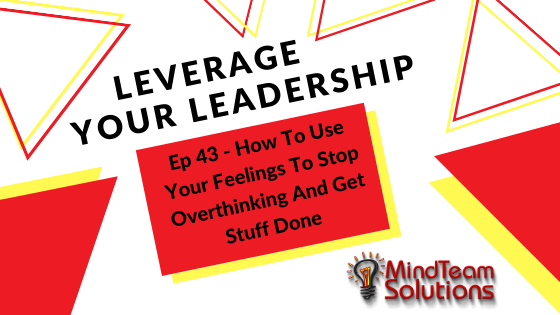Podcast: Play in new window | Download
When we are stuck in a rut and can’t make a meaningful decision, we do too much thinking and not enough feeling.
For this episode, we had Shelley Row discussing how important it is to combine both feeling and thinking when it comes to decision-making and moving up the career ladder. Nowadays, we’ve been raised or primed to think that emotions have no place in success; that the only thing that matters is what goes on in our brains.
However, when we exert all our resources into just thinking instead of feeling, we tend to go in circles. We spend hours and hours each day trying to think of an answer to our problems, and we get nowhere because we are too focused on what we are thinking and ignoring what we are feeling.
04:10 Combine Intuition and Cognition
In most of our careers, we have always been taught that there is no room for emotions if we want to succeed; the only thing that matters is what is going on in our heads, cognition. We are told that we must not let our feelings — our intuition — cloud our cognition. But those feelings, that intuition, are just as important as cognition.
As humans, we are emotional beings; it’s who we are, and it’s how we are built. We can’t ignore our feelings. So to go try and shut off our own emotions is a bad idea.
People in leadership positions — people whom you would assume are very logically inclined — believe that intuition is absolutely essential to their leadership success. Neuroscience books also say the same thing; intuition is just as important as cognition when it comes to success.
10:42 What Happens in Our Brains When We Overthink
The best decision making happens in that middle ground between thinking and feeling. When we’re overthinking, we’re out of balance; we use too much thinking and not enough feeling. When we use logic to make decisions, the part of our brain that works is the working memory part. It is just a very small part of our brain that can hold very little information and is very slow in processing information. Using this part of the brain takes a lot of energy.
Have you been in a situation where you’ve just been thinking and sitting all day, and you get so tired when you come home even if you just sat all day? That’s because you’ve been using your working memory part of your brain more than it can handle, and that uses up plenty of energy. When we overthink, we overuse that part of our brain which can only handle so much information. That’s also why we can’t make meaningful decisions when we only use logic; the logical part of our brain is limited to what it can process.
12:37 How to Stop Overthinking
The first step is to recognize what’s happening to you — you’re out of balance, and you’re thinking too much. You have to bring back the balance and put a little more feeling into the picture.
13:35 The Brain Can Only Handle So Much At Any Given Time
When you find yourself thinking for so long, your brain will start to hurt, and you will find that you are no longer as productive as you were when you first started. That’s because neuroscience tells us that it is better to break huge tasks into bite-sized, more manageable chunks. After finishing each chunk, take a break, walk around, maybe grab a bite to replenish some of your blood sugar, and get your brain refueled and working again.
14:46 Understand Your Brain’s Natural Energy Patterns
Some people work best in the morning, some people work best at night. One of the first things you should also be doing is find out when your brain is at its peak and hit the tasks that take a lot of concentration or take a lot of creativity and tackle them at that time.
More basic tasks like checking your emails, following up on phone calls can be done in your “downtimes,” at small breaks when your brain is not at its peak. That’s because these tasks do not require much concentration; they can be left to the other parts of your day.

Connect with Shelley Row
Website – www.shelleyrow.com/thinkless
LinkedIn – www.linkedin.com/in/shelleyrow/
Blog – www.shelleyrow.com/thinkless/blog/
Twitter – Shelley Row
Connect with MindTeam Solutions:
Website: https://ca.linkedin.com/company/mindteamsolutions
Email: Info@MindTeamSolutions.com
LinkedIn: https://ca.linkedin.com/company/mindteamsolutions

